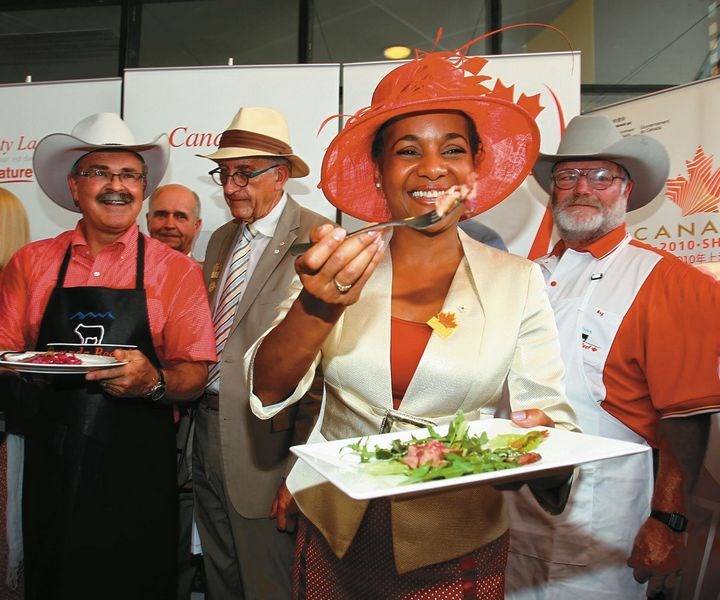The unusual western figures of local ranchers Roland Baumann, Larry Garrett and Mark Grafton strode through the streets of the Orient last week in their boots, buckles and Stetsons, bringing the beef to seven days of meetings with trade officials.
"It went really well, especially in China. We made a lot of headway there; Japan maybe not so much," said Grafton, manager of the Bar-K ranch north of Prince George. "We have a real opportunity here, to get markets open to us before the U.S. gets in there."
The U.S. already has the upper hand in Japan, said Grafton. The local cowboys' meetings there were bolstered by the federal Minister of Agriculture Gerry Ritz who took time out of his Asia-Pacific Economic Co-operation agricultural summit meetings in Niigata, Japan to join them.
"We're working at every level - provincial, federal and industry - to make sure countries like Japan and South Korea trade based on sound science and that our hard-working beef producers achieve the full-market access they deserve," said Ritz.
"We met with a lot of importers and distributors in Japan," Grafton said. "They really want our product, they want their government to undertake a step-by-step opening of their market to our beef, and they are quite frustrated with their government's slow movement and they are a bit concerned by China's quicker movement with us and what the implications are for them if China does go for our product in the way it could."
Grafton said the train they took from the Beijing Airport to the city's downtown travelled at 430 kms per hour. It was very symbolic of the speed of China's infrastructural and economic motion.
"They do have Australian beef in there now and the consumers aren't totally happy with it," he explained. "The importers and distributors we met with want a higher quality product mostly for their hospitality industry and high-end restaurants.
"Right now they are bringing in some Canadian beef products like hides and semen," he said. "They are quite interested in our genetics as well. They are also bringing in Canadian pork at this time.
"There is great potential for value-added beef products and specialty meats, and that is actually a very exciting part of what we and China can do together. They use the intestines, feet, oxtail, heart, bone marrow, tallow, etc. - lots of products that aren't too popular in North America, but it gets a lot more use out of each cow."
The trade mission was set up by B.C.'s and Alberta's ministries of agriculture working together, and both sent provincial officials. A visit to Canada's ranching industry by Chinese stakeholders is expected in November with hopes for a significant import stream to mainland China starting late 2010 or early 2011. Hong Kong has already opened its doors fully, and Ritz stopped in there after his Japanese excursion.
"(In Hong Kong I) met with industry and I am pleased to report that Canada's beef exports to Hong Kong have significantly exceeded expectations," Ritz said. "The Canadian Beef Export Federation originally expected the market to grow to $65 million but it is now expected to be worth more than $105 million for Canadian producers in 2010, a growth of 67 per cent since full-market access was achieved (last December)."
Baumann is a local delegate to the Canadian Beef Export Federation. While Grafton and Garrett returned home this weekend at the end of the Oriental trade mission, Baumann went on to France where the CBEF was holding more talks there about Canadian cattle taking on a bigger role in Europe's consumer markets.



